By Kaitlyn Munro
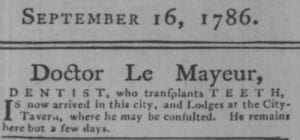
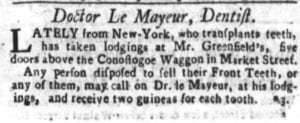 Last spring we conserved a stunning buckskin hunting jacket for The Valentine Museum, Richmond, Virginia. Go check it out in their current fashion exhibit The Virginia Man: Respect, Responsibility, Rebellion until January 29, 2017.
Last spring we conserved a stunning buckskin hunting jacket for The Valentine Museum, Richmond, Virginia. Go check it out in their current fashion exhibit The Virginia Man: Respect, Responsibility, Rebellion until January 29, 2017.
But first, a little history about the gentleman (a fascinating man we might add!) who wore this jacket long ago…
History
Dr. Jean Pierre Le Mayeur, a French dentist, came to America in 1780 where he worked in New York for British clients. It is said that Le Mayeur was offended by British attitudes about Franco-American relations, and made a run for the other side.
We all know of General Washington’s debilitating dental problems. He constantly consulted dentists, one being Dr. Le Mayeur. He worked on Washington’s teeth at his military headquarters in 1783 and then again at Mount Vernon in the summer of 1785. It is unclear what dental services Dr. Le Mayeur provided to Washington. He may have created one or more of Washington’s many pairs of dentures or even experimented with tooth implant procedures.
In a letter from Washington to Le Mayeur July 16, 1783, Washington discretely says “The Valese arrived safe; as the three Articles wch[sic] accompanied your card of the first Instt[sic] also did but the latter did not get to hand till yesterday. I can only repeat my thanks to you for your great and constant attention to me, & wish for opportunities to show my sense of them.” One theory could be the “three Articles” were sets of false teeth or partial dentures. Or that Dr. Le Mayeur may have attempted a teeth implant procedure, as he advertised in a Richmond newspaper “operations on the teeth performed only in Europe such as transplanting.”
Dr. Le Mayeur became a great friend of General and later President Washington, and his family. He visited Mount Vernon many times, shown in the records or their correspondence. Dr. Le Mayeur probably began to think of himself as an American! Sporting this fringed and embroidered buckskin hunting jacket in 1790, after the Revolutionary war was a way of showing this. Hunting jackets (also called a hunting shirt) were popular in America during the late 18th century.
Leather buckskin breeches became wildly popular in the 18th century throughout England and the American colonies. Most of the leather for these was sourced from the American colonies. Driving this colonial market, hunters needed a utilitarian garment, and the first iteration of the hunting shirt, a linen garment, was created. The hunters would have met and traded with Native Americans, and adopted some of their clothing styles. The hunting jacket is a marriage of Native American and European styles – creating a truly American garment. It’s popularity spread; General Washington preferred this practical egalitarian jacket over any fancy military uniforms, so Revolutionary War soldiers wore a version of the homegrown hunting shirt.
Treatment
In order to prepare Dr. Le Mayeur’s jacket for display, we revisited some previous conservation treatments.
The cuffs and collar are made from a brown silk velvet. It has no more pile, and severely cracked. A previous treatment encapsulated the cuffs and collar in a silk crepeline, a really sheer fine silk, which had completely fallen apart. Our treatment included re doing this encapsulation in order to preserve the remaining original velvet.
- Before treatment
- Cuff during treatment
- Before cuff treatment
- Inside collar edge before…
- …and after.
- Inside collar before treatment…
- …and after.
Careful inspection revealed that the jacket once had a full linen lining. 98% of the lining is missing and about 70% of the lining on the belt back is missing. An encapsulation treatment with silk crepeline was applied throughout, using hand stitching.
- Belt before encapsulation…
- …and after encapsulation.
In addition, the belt had a large hole where a buckle once was. The hole was sandwiched between two layers of yellow Stabilitex, a sheer polyester fabric, that provides a nearly invisible support.
- Hole in belt before treatment…
- …after treatment…
- …and the underside of the hold after treatment.
Another conservation task was encapsulation of decorative pink silk ribbons. They are in shattered, torn and brittle. Each ribbon was carefully enshrouded in a “bubble’ of sheer nylon netting. This technique allows the ribbon to retain its three-dimensional qualities and be protected.
- Pink ribbon before treatment…
- …and after treatment.
We became very fond of this jacket while it was in the studio and really enjoyed learning about the man who wore it!
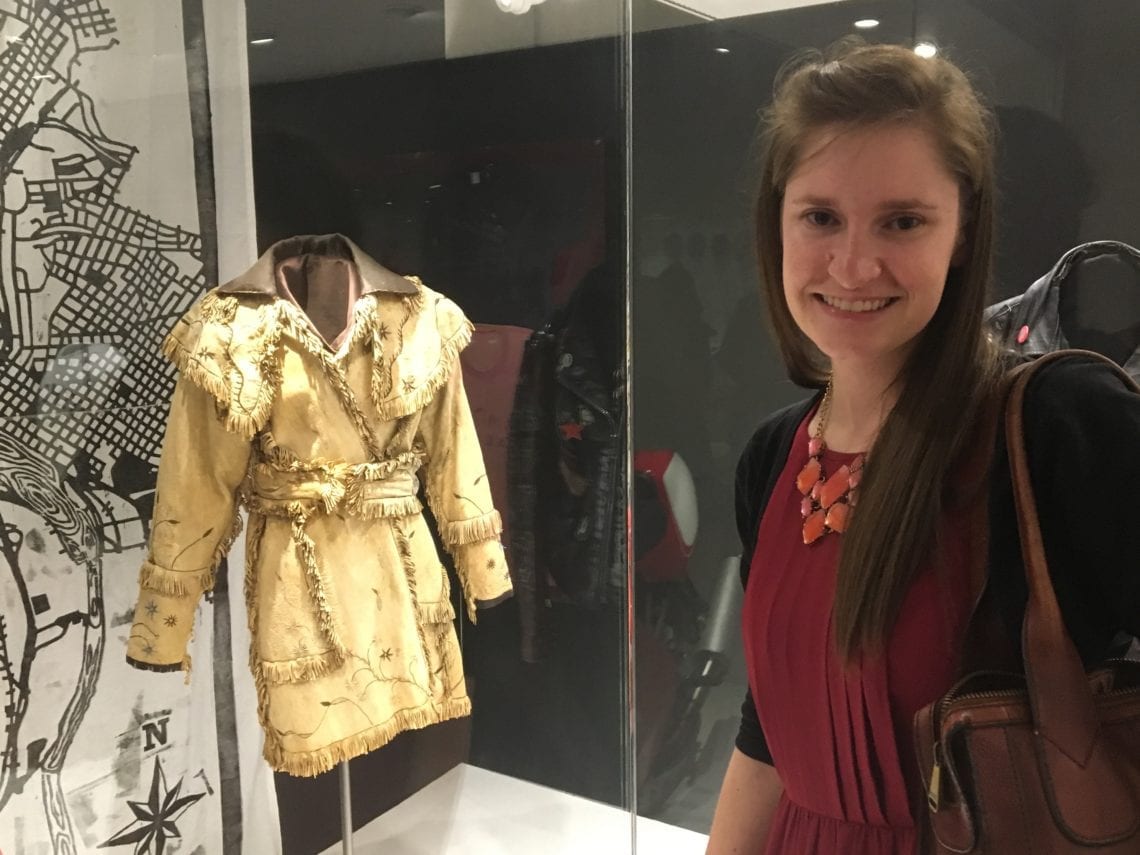
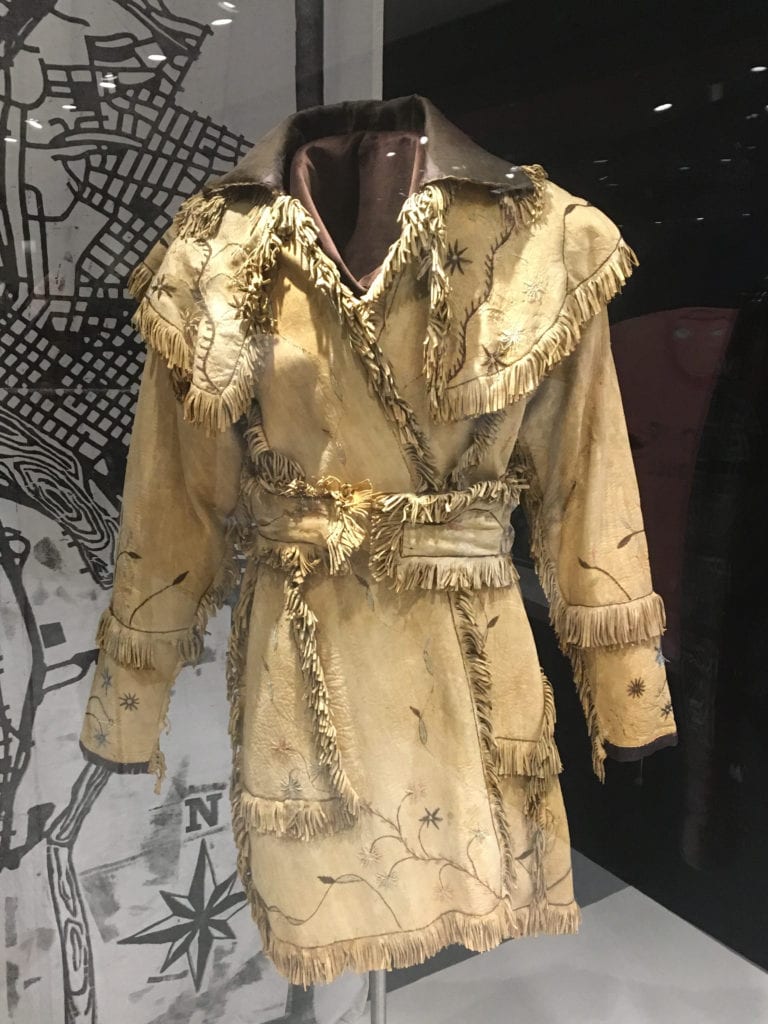
Sources:
http://founders.archives.gov/documents/Washington/04-02-02-0038
http://founders.archives.gov/?q=Le%20Mayeur&s=1211311113&sa=&r=24&sr=
http://www.apostolicfriendsforum.com/archive/index.php/t-32413.html
http://memory.loc.gov/cgi-bin/ampage?collId=mgw4&fileName=gwpage095.db&recNum=778
http://founders.archives.gov/documents/Washington/04-03-02-0301
http://www.examiner.com/slideshow/early-american-dental-advertisements
Washington: A Life by Ron Chernow
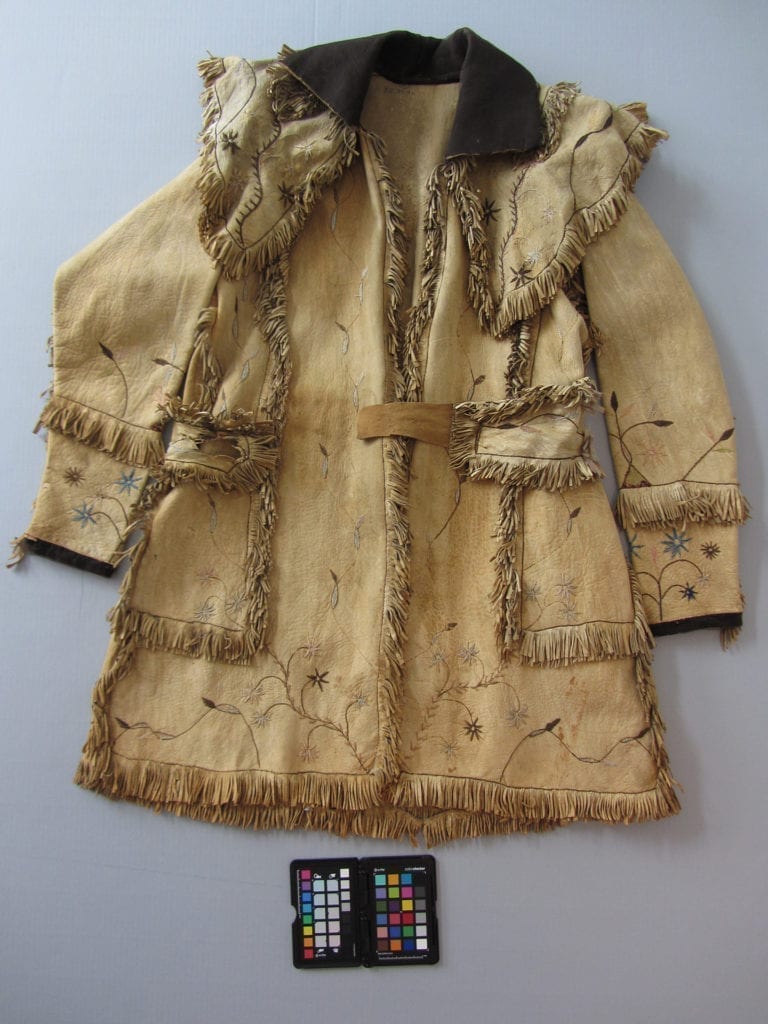
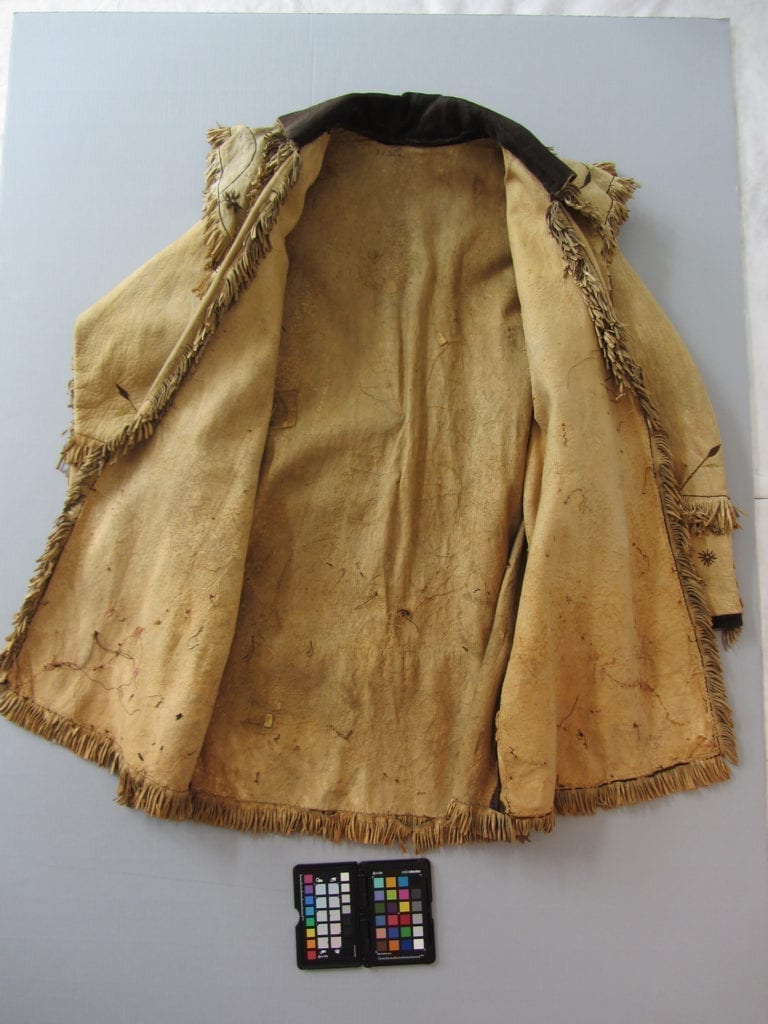
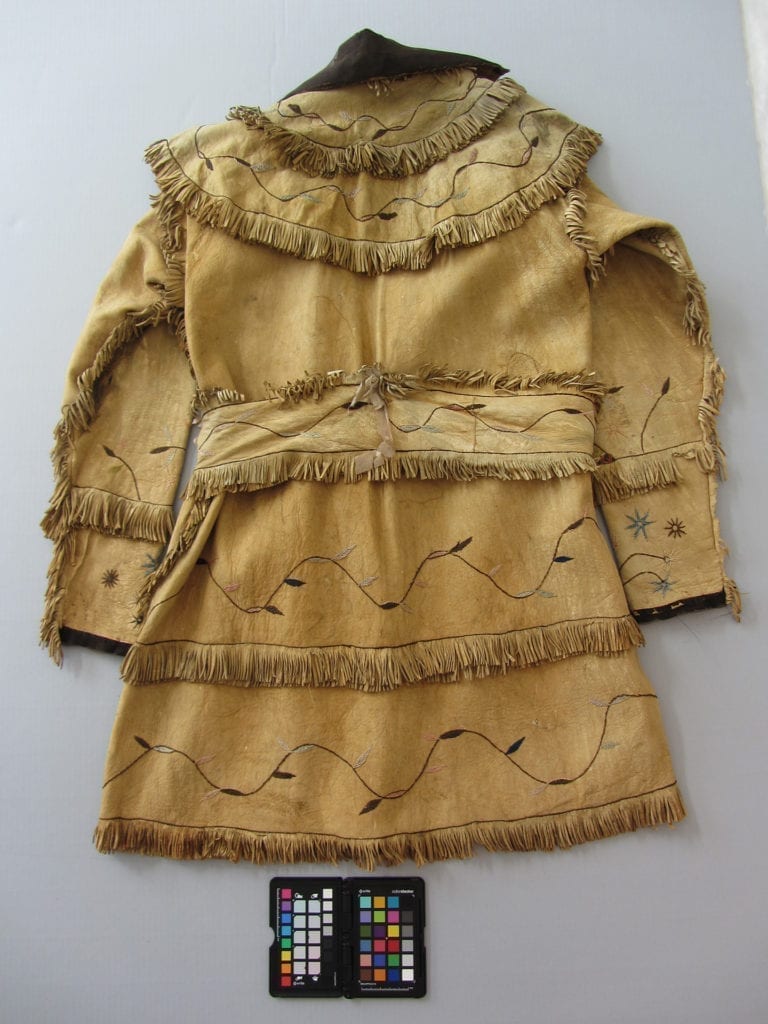
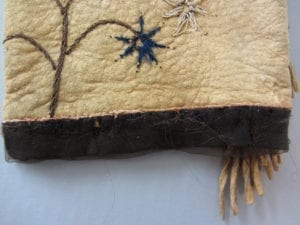
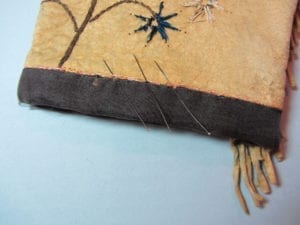
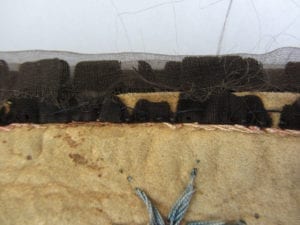
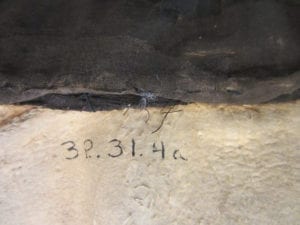
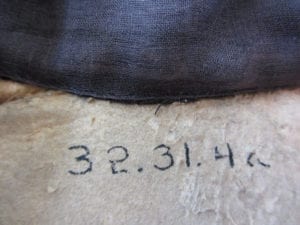
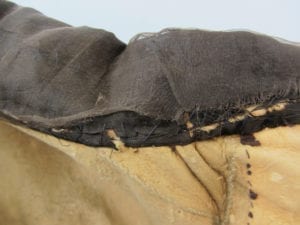
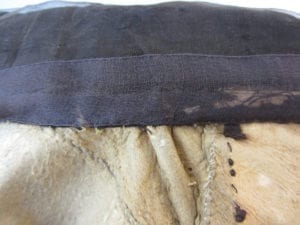
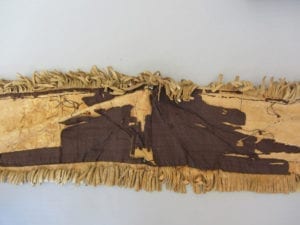
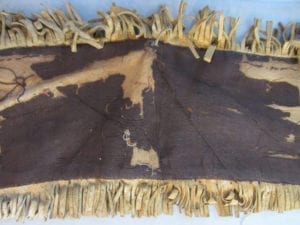
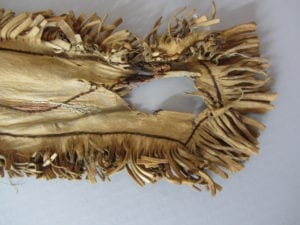
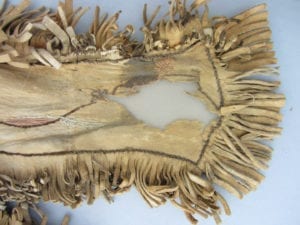
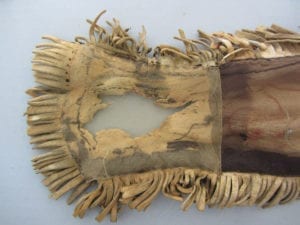
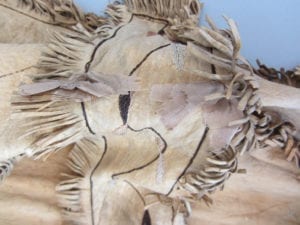
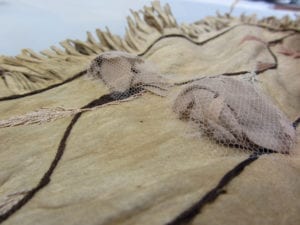

Julia,
Thanks so much for sharing your work. It’s so interesting to see the process and results, and it’s equally enriching to see the article and learn about the original owner and his circumstances! Thanks for taking the time to post.
Best regards,
Sandy McGraw (she of the deteriorating Catholic Daughters of the Americas banner)
Very much enjoy the photo documentation and opportunity to learn more about the wearer
Love seeing the before and after photos. It demonstrates how much time goes into restoration and preservation.
Very good information on an important historical item of clothing. I have a copy of The Frontier Rifleman which has a bit of a write up of the shirt and general pattern information. Also a pen and ink drawing of the jacket. Thanks for the article with the pictures of the jacket.